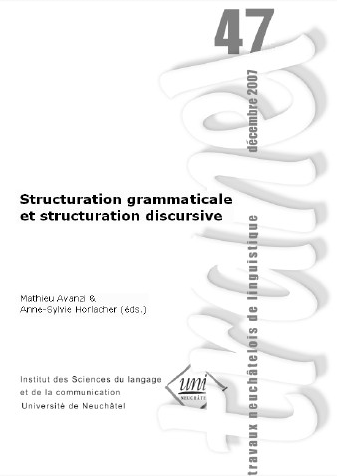Entre l'unité de construction d'un tour et l'organisation de tours multi-unités : la pseudo-clivée en interaction
DOI :
https://doi.org/10.26034/tranel.2007.2741Résumé
In this paper I am interested in the French pseudo-cleft construction (PC) as it occurs in face-to-face interaction. As a bi-clausal construction (Lambrecht, 2001), it contains a first part projecting a specific syntactic continuation, like conditional constructions do ([if...then...], cf. Lerner, 1991). Indeed, various occurrences of PC seem to function in this way. Following such traditional accounts, the PC could be seen as a compound turn-constructional unit (TCU) if apprehended as a grammatical resource to organize talk-in-interaction. However, this is not the only possibility that can be found in the data. First, it has been argued that the initial of a PC part can consist of a syntactically independent proposition (Valli, 1981; Müller, 2006; Apothéloz, forthcoming). Second, the continuation after the first part is frequently more complex than only one clause.
This study explores the various ways in which speakers organize the second parts of a pseudo-cleft and how this organization becomes recognizable in the actual context. I will show that there is a continuum from highly grammaticalized forms to complex units composed of rather loosely connected smaller units, very much along the lines of what we find in the narrative part of story telling sequences (Sacks, 1992). I will conclude with some remarks concerning the implications of such a continuum for the conceptualization of syntactic constructions and for the relation between the latter and interactive units (e. g. TCUs).


